Polyamide vs Nylon: What Are the Differences?
In the world of CNC machining, choosing the right material is essential for achieving precise, durable, and cost-effective results. Polyamide and nylon are two of the most commonly used materials, but understanding the differences between them is critical for making the best decision for your project. Let’s dive into the unique characteristics of each material and explore how they impact machining applications.
While nylon is a type of polyamide, their performance in CNC machining can differ significantly. Both materials have excellent mechanical properties, but nylon offers better elasticity, while polyamide materials such as PA66 provide superior strength and durability. Understanding these differences is key when selecting the best material for high-precision machined components.
Let’s explore the mechanical properties, machining considerations, and applications of both materials, focusing on how each one is used in CNC machining for industrial parts, and other high-performance applications.
What is Polyamide in CNC Machining?
Polyamide is a synthetic polymer known for its high strength, durability, and versatility in various applications. In the world of CNC machining, polyamide is often used for parts that require excellent wear resistance, impact strength, and high precision. PA6, PA66, and PA12 are common grades of polyamide used in machining, each with unique properties that make them ideal for specific tasks. Polyamide nylon fabric and other types of polyamide material can be molded and machined to create strong, lightweight components that perform well in industries like automotive, medical, and consumer electronics.
Polyamide is commonly machined into gears, bearings, washers, and other mechanical components due to its strength and wear resistance. The material’s ability to withstand friction without degrading makes it perfect for applications like CNC machining of industrial parts and high-performance equipment.
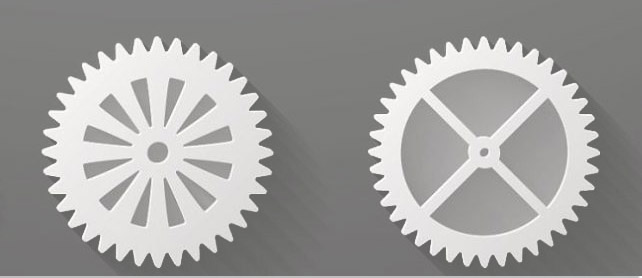
How to Identify Polyamides: 3 Key Methods
Identifying polyamides, including nylon, involves examining their physical and chemical properties. Whether you are working with polyamide fabric, nylon components in CNC machining, or polyamide plastic parts, there are several key methods to determine if a material is indeed a polyamide. Let’s break down the three primary ways to identify polyamide materials.
1. Visual Inspection and Physical Properties
The first step in identifying polyamides is to visually inspect the material. Polyamide fabrics, such as nylon stockings or polyamide socks, have a smooth and shiny surface with a slightly slippery texture, making them easy to distinguish from other materials. In CNC machining, polyamide components, such as nylon gears or bushings, typically have a solid, dense appearance and may have a matte or gloss finish depending on the processing. The polyamide nylon fabric used in textiles is often lightweight, yet strong, while polyamide plastic parts are usually durable and can handle wear and stress without cracking.
2. Durability and Performance Testing
One of the key indicators of polyamide is its excellent wear resistance and overall durability. Polyamide nylon is often chosen for its ability to withstand friction and wear over time, making it ideal for parts that are exposed to continuous movement or heavy load. You can test a material’s durability by subjecting it to high-stress environments, where polyamide will remain intact, unlike softer plastics that might degrade. For instance, polyamide bearings or nylon polyamide fabric used in CNC machining applications show minimal signs of wear even after prolonged use, indicating they are likely made of polyamide or nylon.
3. Chemical and Thermal Behavior
To further confirm whether a material is polyamide, perform chemical resistance and thermal testing. Polyamide materials, such as PA66 or PA12, exhibit high resistance to chemicals like oils, fuels, and solvents. If the material shows minimal swelling or degradation when exposed to these substances, it’s a strong indicator that it is polyamide. Additionally, polyamide materials have a high melting point, generally between 220°C to 260°C. When exposed to heat, nylon polyamide parts remain stable and do not distort easily. This makes them ideal for high-performance applications such as CNC machining of mechanical parts and industrial components.
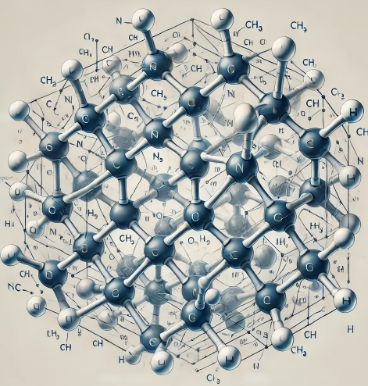
In Sum, Identifying polyamides can be done through a combination of visual inspection, durability testing, and chemical or thermal behavior analysis.
What Are Polyamide Fibers Used For?
Polyamide fibers, commonly known as nylon, have a wide range of applications due to their strength, durability, and versatility. These synthetic fibers are used in various industries, from textiles to automotive, electronics, and more. Below are some key areas where polyamide fibers are commonly used:
1. Textile and Apparel Industry
The most popular use of polyamide fibers is in the textile industry. Nylon fabric is renowned for its smooth texture, high durability, and resistance to wear and tear. As a result, it is widely used in the production of nylon stockings, polyamide socks, and various polyamide clothing items like jackets, sportswear, and activewear. Polyamide is often blended with other fibers like cotton and spandex to create fabrics that are lightweight, stretchable, and comfortable to wear.
2. Industrial Applications
Polyamide fibers are also highly valued in industrial applications, where their strength and heat resistance are crucial. For example, nylon polyamide is used in the production of industrial belts, reinforced cables, and fabrics for filtration systems. These polyamide fibers are known for their ability to handle heavy-duty workloads, making them ideal for CNC machining components, nylon gears, and polyamide bearings that require both strength and flexibility.
3. Automotive and Aerospace Industries
In the automotive and aerospace industries, polyamide fibers are utilized for manufacturing components that require high performance under extreme conditions. Nylon is often used for making automotive parts such as nylon airbag fabrics, fuel lines, and interior trim due to its excellent mechanical properties, high strength-to-weight ratio, and heat resistance. The same qualities make polyamide ideal for aerospace applications, including aircraft interiors and lightweight components.
4. Medical and Electronic Uses
The medical field also benefits from polyamide fibers, particularly in the form of nylon sutures, which are known for their durability, flexibility, and ability to hold knots securely. Additionally, polyamide fibers are used in electronic devices, where they help insulate wires, cables, and other critical components. The nylon polyamide fabric used in electrical applications is resistant to abrasion, chemicals, and heat, making it a reliable material for CNC machining parts used in electronics.
What is Nylon in CNC Machining?
Nylon is a type of polyamide that is highly valued in CNC machining for its flexibility, low friction properties, and durability. The material is known for its ability to be machined into intricate shapes while retaining its strength and flexibility. Nylon is commonly used in applications that require materials to absorb shock, reduce wear, and provide excellent performance under stress.
In CNC machining, nylon is often chosen for parts like bushings, bearings, gears, and washers, where low friction and impact resistance are necessary. It is also used in 3D printing and other additive manufacturing processes for creating functional prototypes and end-use parts due to its excellent machinability.
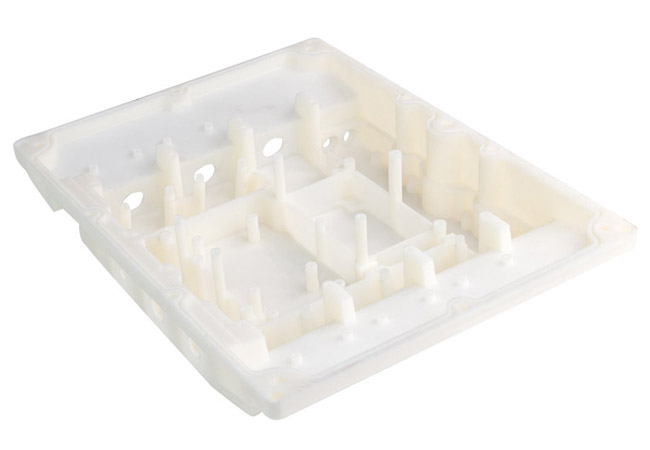
What is Nylon Fabric Made of?
Nylon fabric is produced from nylon fibers, which are a type of polyamide. The fibers are synthesized through a polymerization process, where monomers like hexamethylenediamine and adipic acid are combined to form long polymer chains. These fibers are then woven or knitted into fabrics, which are ideal for various CNC machining processes. Nylon fabric is often used in CNC machining to create components that need to be flexible, lightweight, and durable, such as nylon polyamide fabric for industrial uses or nylon jacket women’s clothing.
Nylon fabric is known for its resilience, high tensile strength, and elasticity, making it suitable for applications ranging from garments like nylon stockings to industrial fabrics used in CNC machining equipment.
Advantages of Nylon Material
Nylon is one of the most widely used materials in various industries, including CNC machining, textiles, automotive, and electronics. It’s a type of polyamide with a range of advantageous properties that make it suitable for different applications. Let’s dive into each of the main advantages that make nylon such a highly regarded material.
1. High Strength and Durability
One of the most significant advantages of nylon is its exceptional strength and durability. Nylon is a tough and resilient material, capable of withstanding heavy mechanical stress and continuous use without deteriorating. This makes it an ideal choice for applications where parts need to endure wear and tear over time. In CNC machining, nylon is commonly used to produce gears, bushings, bearings, and washers, which all require significant strength and the ability to handle friction and heavy loads. Its impressive tensile strength and fatigue resistance ensure that components last longer in high-stress environments.
Applications: Automotive parts, machinery components, electrical connectors, consumer products like nylon stockings and nylon bags.
Benefits: Provides long-lasting performance, ideal for components that experience constant wear and need to maintain structural integrity over time.
2. Excellent Chemical Resistance
Nylon is highly resistant to a wide variety of chemicals, including oils, fuels, solvents, and alkalis. This makes it an excellent material for environments where exposure to harsh substances is a concern. For industries such as automotive, chemical processing, and electronics, where parts are exposed to potentially corrosive agents, nylon offers outstanding chemical resistance that ensures longevity and prevents degradation of components. Whether used in fuel lines, hoses, or electrical components, nylon can stand up to chemicals and harsh environments without compromising its performance.
Applications: Fuel lines, automotive components, electrical connectors, medical equipment.
Benefits: Enhances durability by preventing material degradation in chemically aggressive environments.
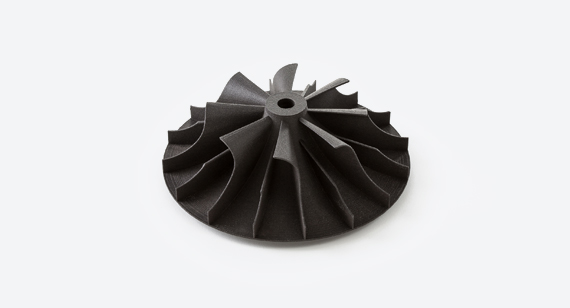
3. Low Friction and Self-Lubricating Properties
Nylon has inherent self-lubricating properties, which means it naturally reduces friction when used in moving parts. This is particularly advantageous in CNC machining and industrial applications where mechanical components move against each other. The low friction between nylon components reduces the need for external lubricants, leading to cleaner and more efficient operation. It is ideal for components that are subject to wear from repetitive motion, such as bearings, gears, and sliding elements. Additionally, nylon’s low friction helps extend the life of the parts, as they don’t experience the same level of wear as they would with other materials.
Applications: Bearings, gears, sliding components, machine parts in continuous motion.
Benefits: Increases efficiency, reduces the need for lubrication, and prolongs the life of components by minimizing wear.
4. Lightweight and Impact Resistance
Despite its strength, nylon is relatively lightweight compared to metals and other engineering plastics. This characteristic is especially beneficial in industries such as automotive and aerospace, where weight reduction is a critical factor for performance. Nylon also exhibits excellent impact resistance, meaning it can absorb sudden forces and shocks without breaking or deforming. This makes it suitable for parts that may be exposed to impacts, vibrations, or shocks in various operational conditions. Whether in automotive parts or sports equipment, nylon’s combination of lightweight properties and impact resistance ensures components maintain their integrity under stress.
Applications: Automotive parts, sports equipment, electronic housings, machinery parts.
Benefits: Offers weight reduction in critical components while maintaining excellent strength and impact resistance, improving performance and durability.
5. Flexibility and Elasticity
Nylon is renowned for its flexibility and elasticity, which allow it to bend, stretch, and return to its original shape without cracking or breaking. This makes it ideal for applications where parts need to absorb forces or where movement is involved. In CNC machining, nylon components such as seals, bumpers, and shock absorbers benefit from these properties, ensuring that the parts can function in environments where flexibility and movement are essential. Its elasticity makes nylon also a good material for creating textile products like nylon socks and sportswear, where comfort and fit are key considerations.
Applications: Seals, bumpers, sportswear, nylon socks, shock absorbers.
Benefits: Provides comfort and durability in textile products, and ensures reliable performance in mechanical parts that need to flex without breaking.
6. High Thermal Resistance
Nylon is capable of withstanding a range of temperatures without losing its physical properties. While nylon’s heat resistance is not as high as metals, it can still operate in environments where other plastics might degrade. Nylon 66, for example, has excellent thermal stability and retains its strength even under elevated temperatures, making it suitable for use in automotive and electronics applications where parts are exposed to heat. For CNC machining, this means that nylon parts can be used in high-heat environments without the risk of melting, warping, or losing their structural integrity.
Applications: Automotive components, electronics, machinery parts exposed to high temperatures.
Benefits: Ensures components maintain their strength and functionality in high-temperature environments, such as in automotive engines or electronic devices.
Polyamide vs Nylon: The Key Differences in CNC Machining
Both polyamide and nylon are widely used in CNC machining due to their strength, flexibility, and durability. However, despite nylon being a type of polyamide, the two materials exhibit different properties that make them suitable for distinct applications. Understanding these differences is essential when selecting the right material for your machining needs.
Chemical Structure and Composition
While nylon (typically Nylon 6 and Nylon 66) is a type of polyamide, its molecular structure provides distinct characteristics. Nylon is more flexible and elastic compared to other polyamide materials like PA12 and PA66, which have a more rigid structure. This flexibility in nylon is particularly advantageous in applications such as CNC machining of gears or moving components that require some stretch and moderate durability.
On the other hand, polyamide materials like PA66 offer superior dimensional stability and resistance to wear, making them ideal for applications requiring high strength, such as machined plastic parts or automotive components.
Performance in CNC Machining
In terms of CNC machining, nylon has a slight edge when it comes to ease of machining. Its flexibility, combined with a lower melting point, allows for faster processing and better precision, especially for intricate parts like nylon stockings, nylon socks, or precision components. Nylon is ideal for applications where high flexibility and moderate strength are required.
However, for CNC machining applications that demand exceptional strength and wear resistance, polyamide (such as PA66) is often the material of choice. Polyamide is well-suited for high-stress components like gears, bearings, and bushings that need to endure extreme conditions.
Wear Resistance and Durability
Both nylon and polyamide offer excellent wear resistance, but polyamide generally excels in high-impact, long-term applications. For instance, polyamide nylon fabric is used extensively in the production of CNC machined parts for industrial applications where continuous wear is expected, such as gears, bushings, and bearings.
While nylon also offers good wear resistance, its flexibility and slightly lower strength make it better suited for parts that do not undergo extreme wear and tear. Polyamide, with its more rigid structure, performs better under long-term, high-stress conditions, making it ideal for high-performance industrial and mechanical components.
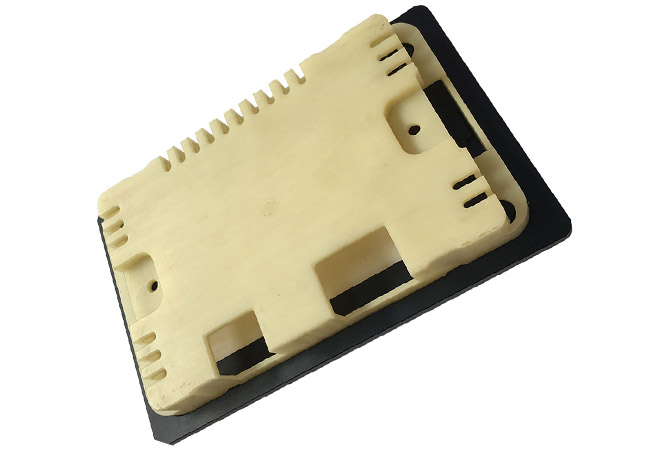
Thermal and Environmental Resistance in CNC Machining
When it comes to thermal resistance, nylon generally outperforms other polyamide materials like PA6 or PA12, especially in high-temperature applications. Nylon can withstand higher temperatures, making it ideal for CNC machining parts that are exposed to heat, such as components in automotive or electrical applications.
However, for applications where polyamide materials need to withstand harsher conditions like high wear and impact, polyamide nylon components shine. Polyamide has better resistance to extreme environmental factors, such as continuous friction, abrasion, and high pressure, making it the better choice for CNC machined parts in industrial machinery, automotive, and aerospace sectors.
Cost and Maintainability Considerations
When evaluating cost and maintainability, the choice between polyamide and nylon also plays a role. Nylon, due to its flexibility and ease of processing, is typically more cost-effective for applications that don’t require the extreme durability of polyamide. For example, nylon is often used in consumer goods such as nylon socks, nylon jackets, and lighter industrial components.
In contrast, polyamide materials like PA66 or PA12 tend to be more expensive but offer superior durability, especially in high-performance CNC machining parts that need to withstand harsh conditions, making them more suitable for industrial equipment and automotive parts where performance outweighs cost.
Polyamide vs Nylon: Which is Better for CNC Machining?
When choosing between polyamide and nylon for CNC machining, the decision largely depends on the specific requirements of the application. Nylon is known for its flexibility and high elasticity, making it ideal for parts that require some stretch and low-load capacity. This includes nylon socks, nylon jackets, and CNC machined parts like bushings, washers, and gears where wear resistance and flexibility are crucial.
On the other hand, polyamide materials, particularly high-performance types like PA66, offer superior strength and durability. Polyamide is the preferred material for CNC machining in demanding industries like automotive, aerospace, and medical devices, where parts need to withstand harsh conditions, including high pressure, impact, and abrasion. Polyamide is better suited for heavy-duty applications that require enhanced structural integrity and performance over time.
Start your CNC Machining POM Project at VMT
With our state-of-the-art CNC machines and skilled engineers, we specialize in machining POM (Polyoxymethylene) components that meet stringent performance requirements for industries like automotive, electronics, and medical devices. Whether you’re looking for durable gears, bushings, or custom parts, our team ensures your project is handled with the highest level of precision and efficiency.
At VMT, we provide end-to-end support, from initial design consultation to final production. Our commitment to excellence and fast delivery ensures that your CNC machining POM parts will meet exact specifications and be produced on time.

In Conclusion
Polyamide and nylon are two types of synthetic polymers widely used in CNC machining for their strength, flexibility, and versatility. While both materials offer excellent wear resistance and durability, nylon is more flexible and elastic, making it suitable for textiles and parts that require elasticity, while polyamide provides superior strength for heavy-duty industrial applications.
Frequently Asked Questions About Polyamide vs Nylon
Is Polyamide Toxic?
Polyamide, commonly known as Nylon, is generally not toxic in its finished form. However, the chemicals used during its manufacturing process can pose some risks. Polyamide itself is safe for use in textiles, engineering parts, and other products. Prolonged exposure to polyamide dust or fumes in certain industrial settings may cause respiratory issues. Always follow safety guidelines when handling raw materials.
Does Polyamide Shrink?
Yes, polyamide can shrink when exposed to high heat. Improper washing or drying, such as using hot water or a high-heat dryer, can cause it to contract. This is particularly common in fabrics made from polyamide. In industrial applications, polyamide parts may also experience slight dimensional changes when exposed to extreme temperatures.
Is Nylon Waterproof?
Nylon is not inherently waterproof, but it is water-resistant to some extent. It can absorb moisture, up to 10% of its weight, which affects its properties over time. To make nylon waterproof, it can be treated with coatings like urethane or silicone to enhance its water resistance, especially in outdoor gear and clothing.
Is Nylon Synthetic?
Yes, nylon is a synthetic polymer, meaning it is man-made through a chemical reaction known as polymerization. It was one of the first synthetic fibers developed and is widely used in textiles, automotive parts, and industrial applications due to its durability and versatility.



